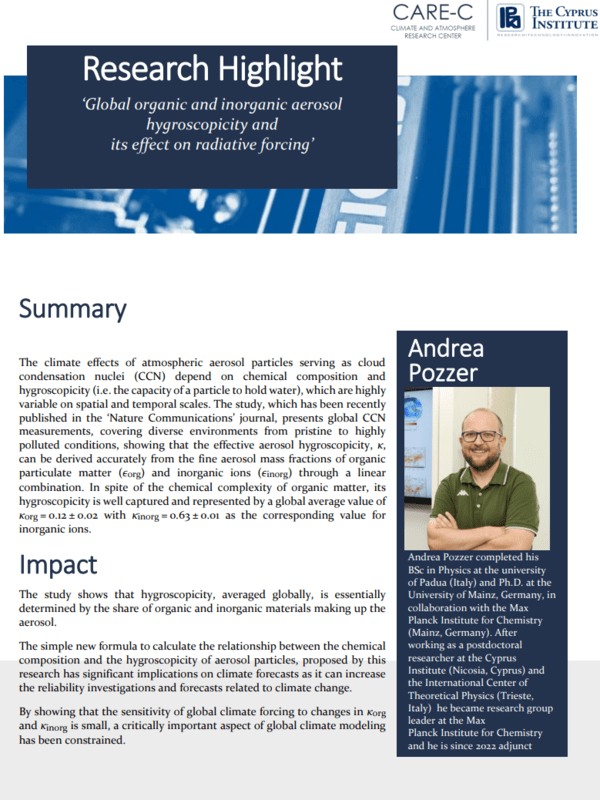
Global organic and inorganic aerosol hygroscopicity and its effect on radiative forcing
The climate effects of atmospheric aerosol particles serving as cloud condensation nuclei (CCN) depend on chemical composition and hygroscopicity (i.e. the capacity of a particle to hold water), which are highly
variable on spatial and temporal scales. The study, which has been recently published in the ‘Nature Communications’ journal, presents global CCN measurements, covering diverse environments from pristine to highly polluted conditions, showing that the effective aerosol hygroscopicity, κ, can be derived accurately from the fine aerosol mass fractions of organic particulate matter (ϵorg) and inorganic ions (ϵinorg) through a linear combination. In spite of the chemical complexity of organic matter, its hygroscopicity is well captured and represented by a global average value of κorg = 0.12 ± 0.02 with κinorg = 0.63 ± 0.01 as the corresponding value for inorganic ions.



